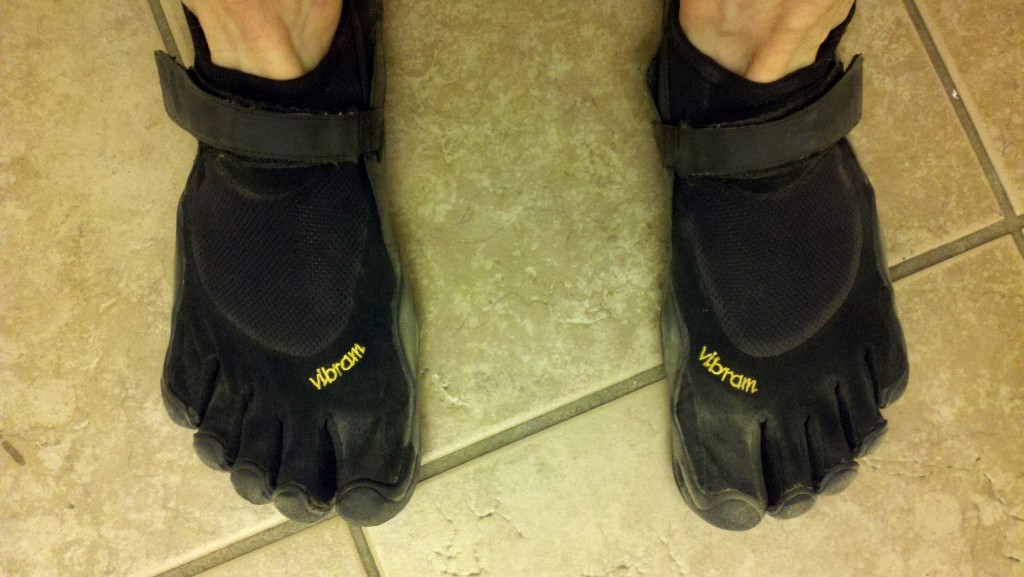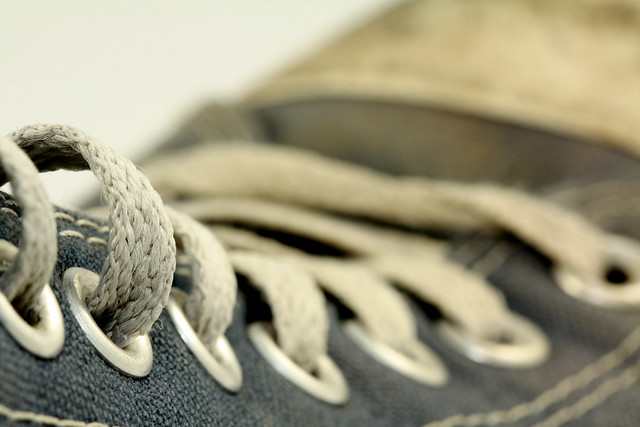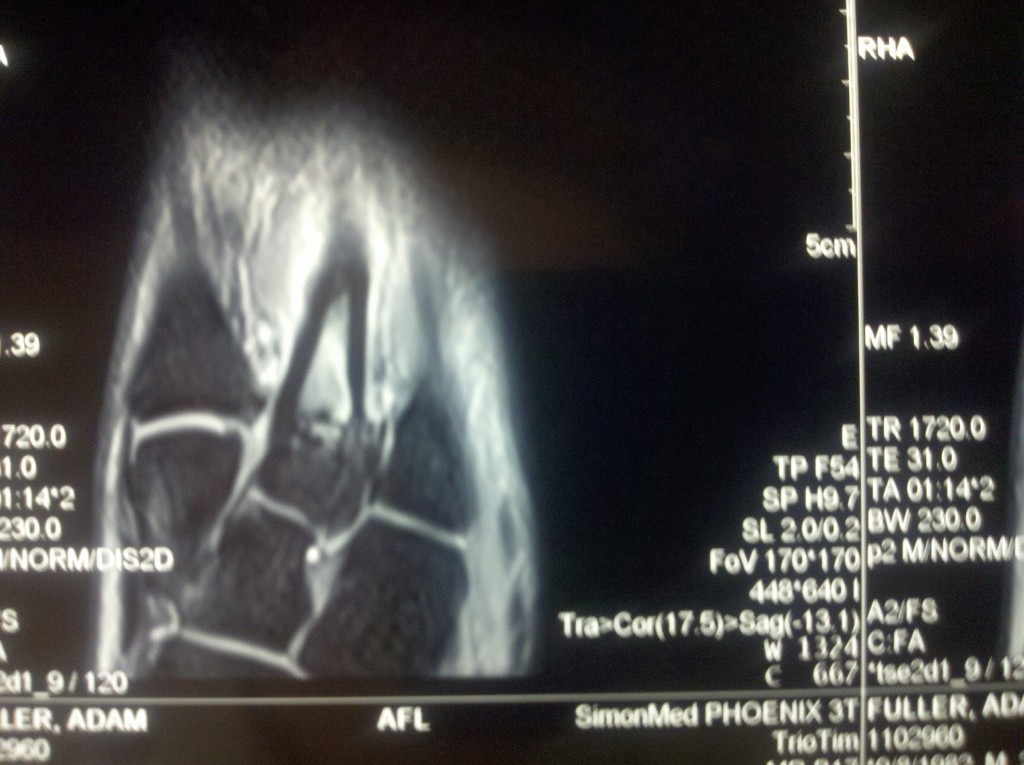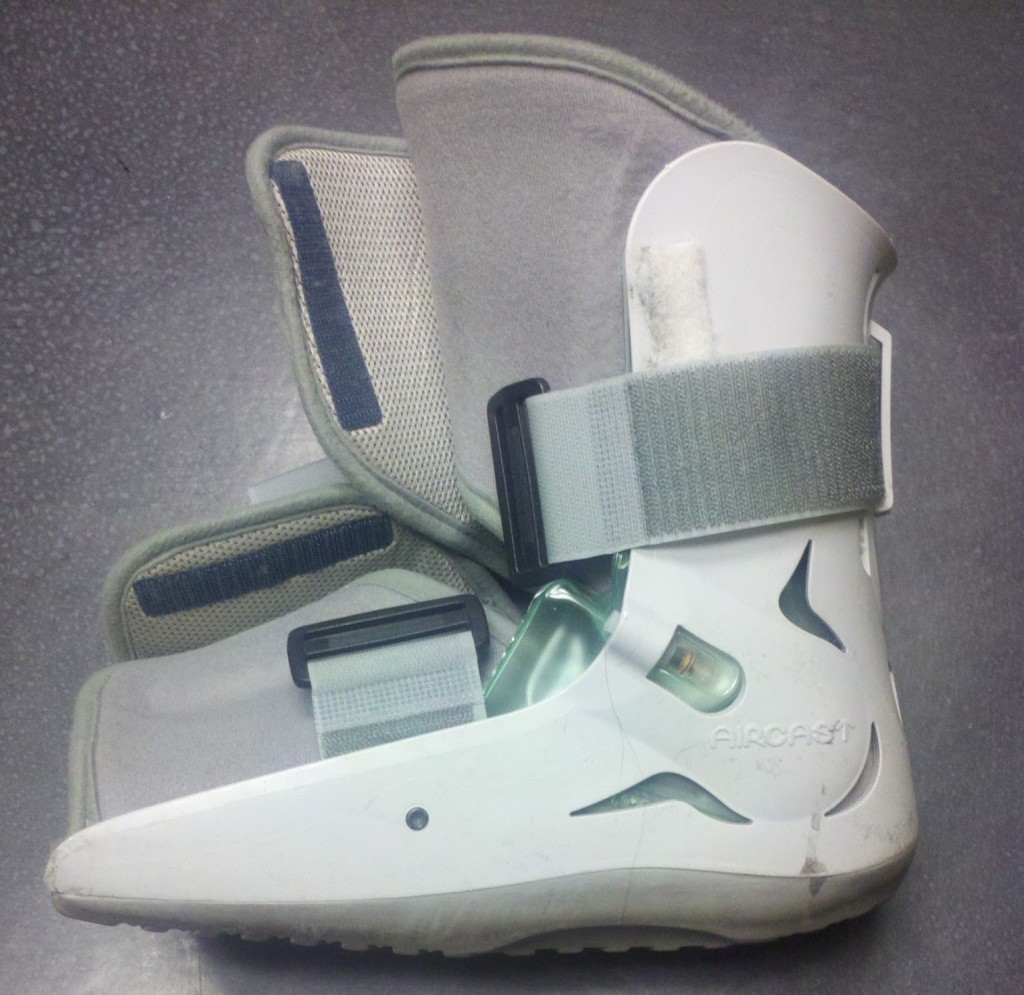How my posterior tibial tendon dysfunction could have been avoided, and why it don’t always gotta be the shoes.

My feet used to be awesome.
After nearly two years of strong, minimalist running, they developed nice high arches, flexible toes and could happily handle all the bludgeoning that endurance and strength training threw their way.
Running used to be my strongest sport, and when I registered for Ironman AZ 2013, I was so jacked up to go out and dominate that I could barely sleep in the days that followed.
Excited, I kept training hard, set the course for the coming year and started to design my training plan.
But now, only a few months later, everything has changed.
My left foot is injured, deformed and sad. The right one is bored, both are weak and I haven’t run in over a month.
What happened? The short answer is that my left foot – which suffered a stress fractures last year – wasn’t ready to handle the long distances of the Ragnar Del Sol race. It’s misaligned and primarily hindered by posterior tibial tendonitis and dysfunction.
Many would argue that my injury isn’t surprising, considering my minimalist footwear.
However, it’s not the minimalist shoes’ fault. And to understand why, you’ll need to see the context of my injury and how I’m planning on overcoming it.
To start, let’s take a look at how we got to this point.
My Running Timeline:
Around age 3: My first memory and first taste of a running high: doing laps around the backyard, I look up at the stars and feel a calm awesomeness.
Footwear: Probably plastic sandals
Age 3 to 15: Grow to love baseball, and then basketball. These sports are the hub of my physical activity (and life). Any running is a result of either practice or games.
Footwear: Anything Nike (Nike’s marketing of the Air Jordans weighed heavily on my young, impressionable mind. I developed a basketball shoe addiction, highlighted by a messy temper tantrum in Foot Locker for a pair of the Air Jordan 6s. I would beg my mom for new – mostly unnecessary – basketball shoes every six months).
High School: Despite hours of unproductive weightlifting – bordering on being that guy at the gym – I learn proper running form through a great strength and conditioning coach. The key points: land on the balls of your feet, foot lands under the hip, nose over toes, steady, relaxed head, arms at 90 degree angles.
Footwear: Clunky basketball shoes
College to mid 20s: Exercise isn’t a big part of my life. The only running occurs when I’m late for class or about to miss happy hour.
Footwear: Don’t recall
Mid 20s: Start doing Crossfit workouts and going on a handful of three-mile runs throughout the week.
Footwear: Standard white guy New Balance running shoes

Late 20s: Read the book Born to Run and drink the barefoot Kool-Aide (gross!). I turn to Converse All Stars a few times a week as my first set of minimalist running shoes. After a few months, they become my everyday running shoes.
Footwear: Nike Free / Converse All Stars
Age 29 (Nov. 2011): Complete my first triathlon: Bluewater in 3:05:39
Footwear: Converse All Stars
Age 29 (Jan – March 2012): Slowly transition from the Cons to Vibram FiveFingers (VFF). After three months of easing into it, I’m a full-time, pseudo-barefoot runner. My toes feel like fingers, my arches are high and I never want to wear another running shoe again.
Footwear: VFF KSO

Age 29 (Mid-March 2012): My first running injury: At the beginning of a six-mile, night-time run along a dirt path in VFF, my left foot slams down on a big rock. It stops me in my tracks, but I stubbornly, stupidly, keep running. On the same run, just before returning home, I jam my left big toe into the pavement. I know it’s bad, but the pain is just beginning.
Footwear: VFF KSO
Age 29 (April 2012): Despite the injured left foot, I complete the Lavaman Olympic Triathlon in 2:44:09. I can barely walk after the race and know it’ll be a long road back.
Footwear: Converse All Stars

Age 29 (April 2012): MRI confirms a stress fracture of the second metatarsal. I wear a walking boot for six weeks. When the podiatrist discharges me, he doesn’t recommend physical therapy. In the same hurried breathe, he suggests orthotics and more stabilizing footwear. I explain my preference for minimalist running, and he quickly shrugs it off. After seeing how flat my left foot has become since wearing the boot, I ask for a prescription for physical therapy. He obliges – scribbling on auto-pilot – and scurries off to his next (surely nonplussed) patient.
Footwear: Walking boot
Age 29 (May 2012): Physical therapist actually listens and appreciates my allegiance to the barefoot philosophy. We work together for about eight weeks to slowly strengthen my left foot, leg, knee and hips. Despite our strategy to go the natural route, with the goal of getting back to barefoot running, her boss storms over on day 2 to sell orthotics (which makes the clinic more monies): after a one-minute assessment of my foot and leg, he dumps a bucket of big words and medical jargon at me, “shoots from the hip,” and vehemently recommends orthotics. I tell him that I’ve read a lot on the topic, and would rather try the natural route first. If it doesn’t solve our problem, I say, orthotics can be the backup. He backs down and after a couple months I am running again, and working out full force, pain free, without orthotics. In the end, my trainer agrees the natural route was the right call.
Footwear: Saucony cross-country racing flats with VFF sprinkled in
Age 30 (November 2012): Complete Lake Havasu City Olympic Triathlon in 2:52:08 – first in my age group (though it was a pretty small contingent)
Footwear: Saucony cross-country racing flats
Age 30 (February 2013): Run over 20 miles in about 31 hours in the Ragnar del Sol Relay. Arch collapses on left foot during my second leg, and the rest of the race is a painful grind. The inside of my left ankle swells up and hurts with every step; I shift the weight balance to deal with the pain, only to develop an ache on the outside of the left foot later on. A great time, but a major setback: after the race my foot is swollen, disturbingly flat and visibly misaligned. It’s clear my foot/leg had not built up enough strength to support that distance. Back to physical therapy I go.
Footwear: Saucony cross-country racing flats
Age 30 (Early March 2013): Go to a new sports therapy clinic recommended by friends and family. They’re sympathetic to my situation and not hell-bent on selling orthotics. Therapy includes many variations of balancing, stretching and strengthening exercises, along with ASTYM, ultrasound and even needling. We are making progress, pain is subsiding, but it’s a long slow road.
Footwear: Nike Free
Age 30 (Mid March 2013): Consult my second podiatrist, primarily for a routine administrative matter, and secondarily for a second opinion on the condition of my foot, and thoughts on my hopes for minimalist running. He said my Posterior Tibial Tendon is “diseased” and needs to heal completely before I run again, or I risk more complications down the line. All make sense to me. But then I hear that magic word again: orthotics. I question that tactic and he defensively snaps back, “Would you rather have surgery instead?” I tune out the next few minutes of his monologue (something about literature showing injuries in minimalist runners), and chalk another one up on the big board for closed-minded, orthotic-salesman doctors. I take his prognosis with a grain of salt, but it’s still a bummer to be told that your foot will never get back to the way it was (without purchasing orthotics of course).
Footwear: Office-wear dress shoes (I scheduled my appointment during a lunch break)
Age 30 (Late March 2013 – Present Day) At the recommendation my physical therapist, I swallow my pride and buy a pair of traditional, stability running shoes to take the strain off my aggravated Posterior Tibial Tendon, and help realign my foot. I die a little inside, but I secretly appreciate the comfort and support.
Footwear: Saucony ProGrid 6 8mm drop running shoes
Injury status
The posterior tibialis’s’s’sss main job is to stabilize the lower leg. It helps keep the foot aligned in a healthy neutral position, where body weight is distributed appropriately to the parts of the foot designed to take the impact (eg the arch). My posterior tib is “diseased” from tackling too much distance, too soon after an injury, and thus my arch is flat, my inside ankle juts out and my foot is misaligned. In addition, my stiff big toe is not helping to absorb the impact when the foot is in neutral position. This puts a beating on the outside of my foot.
It’s gotta be the shoes
No, Mars. This injury is a result of user error. My running form was fine, I was loving minimalist running and the shoes never malfunctioned. A few key decisions set me on a course for injury. I’m still a card-carrying believer in the barefoot, less-is-more philosophy. Orthotics would just weaken my feet, hinder our goal of strengthening the arch, and cost a boat load. However, I realize it’s gonna be awhile before I’m back in VFF.
Four lessons learned:
- No running at night in VFF
- Recognize the difference between being hurt and being injured. I should’ve stopped running and walked my sorry ass home after stepping on that rock in March, 2012.
- Don’t take on long distances too soon after an injury. My foot wasn’t ready for Ragnar Del Sol.
- Ween back into minimalist running shoes. Just because you used to go VFF 100 percent, doesn’t mean you can jump back in without skipping a beat. Take your time and pretend you’re a newbie.
Recovery strategy
- Slowly heal and strengthen the posterior tibialis through a variety of balancing, band-work, single-leg squat and mobility exercises. Eventually (hopefully) it will grow strong enough to naturally correct the foot’s alignment and support the arch.
- Go to physical therapy three times a week; receive ASTYM, STYM, ultrasound etc.
- Do leg-strengthening exercises and mobility work every day (band work, foam roll, lacrosse ball, yoga, stretching, etc.)
- Wear stability shoes while we’re in rehab, with the end goal of someday returning to VFF. Just say NO to orthotics dealers.
- Tape the foot for added support
- Ice the inside and outside of the foot every night
- Keep asking questions and reading about posterior tibial dysfunction. Research new ways to help strengthen the foot.
Now it’s your turn. If you have your own posterior tibialis horror stories or thoughts on barefoot running and orthotics please share in the comments. I’d also love to hear any opinions on my recovery strategy and suggestions for getting over this injury.
– Live every day –
Adam
P.S. There’s a ton of information out there that supports both sides of the barefoot-vs-stability debate. Like many issues, we must choose what and whom to believe. From my experiences, I subscribe to the barefoot argument, but acknowledge that it’s not for everyone. The foot is incredibly complex and there’s no one-size-fits-all answer for everyone’s needs. I appreciate the discussion, and welcome respectful criticism or opinion, from either side of the aisle.
Also, I’m not a doctor or a trained medical professional. Please consult a credible expert for your own injuries and direction. Take my advice for what it is: a testimonial from an injured minimalist runner who can’t wait to get back out there.
UPDATE! See the latest in the Foot Fight saga in this follow-up post: Foot Fight 2